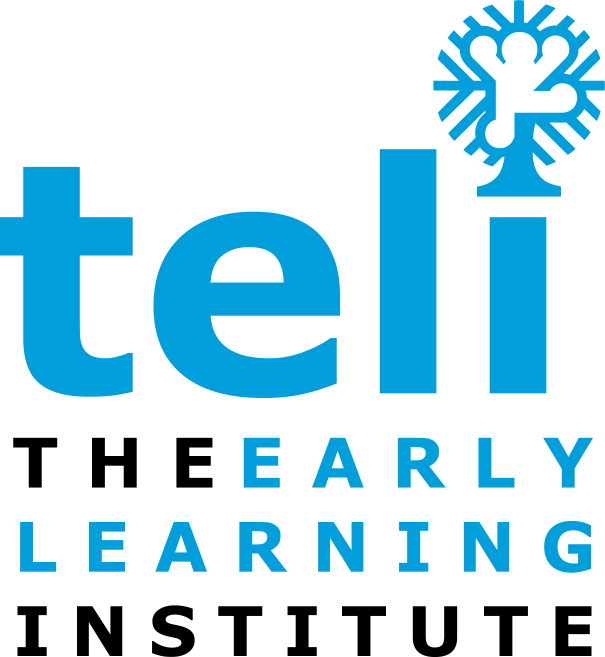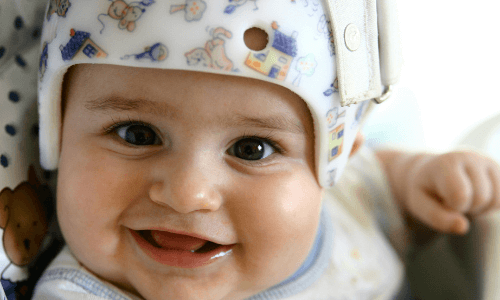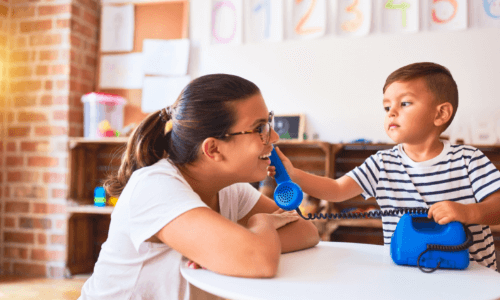By Kim Morrow, Developmental Specialist
Communication is an essential part of everyone’s world. How you interact with others or how you express your needs are all important ways in which you relate to others in your environment. While adults and children use words, babies communicate very effectively from birth without words. Infants express themselves through sounds (crying, cooing, squealing), facial expressions (eye contact, smiling, grimacing) and gestures/body movements (moving legs in excitement or distress).

As our teli staff provides Early Intervention Services, they help parents interpret their infant’s “language” of sound, facial expressions and body movements. Ultimately, their initial “non-verbal” communication signals serve as an important bridge to future communication skills and their speech / language development.
Why is communication without words so important for you and your child’s speech development?
In our work in Early Intervention we reinforce the importance of helping children express themselves and reduce the frustration of not being “heard” that plays out as crying and screaming. Their use of sounds to signal they are hungry or kicking their legs while changing to express excitement are their unique way of expressing themselves. Babies continue to develop communication skills when adults respond to their efforts to “tell” others about what they need or want.
Children as early as 6-8 months begin to learn and use manual signs to communicate their needs. Before they can control the oral motor skills that enable a child to form words, a gesture allows the child to convey their needs without words. The muscles in a baby’s hand are developed before the muscles needed for speech and can provide an outlet for expression. A baby will begin to express themselves through pointing to something they want. These early signs provide the baby with a way to draw attention to their needs and to learn the concept of cause and effect (I produce a sign/gesture therefore I get what I desire). When they can communicate concepts such as more, eat, drink, play, mine, or all done, these signs signal an important beginning to your child’s ability to communicate long term.
What are the benefits of baby’s “non-verbal” expression?
We all know the power of communication in being able to convey your needs. Now imagine the challenge of a child unable to communicate their needs. Some of the benefits of “non-verbal” communication for a child include:
- Reduction in frustration for the child which translates into a decrease in screaming, tantrums and crying when they have signing as an outlet to communicate their needs.
- Development of a closer parental bond through imitation and joint interaction.
- Increase in literacy
- Increase in social interaction with family and other children by engaging in signs and two-way interactions that communication affords
- Increase in literary and academic performance
What can I do to help my baby reach the next step in language development?
As children grow, they begin to learn by imitating what they see a parent do and begin to link their “non-verbal” communication to words. They observe you moving your hand to your mouth while saying “eat” to help them understand the connection. By age 6-7 months you can help them form the sign such as holding their hand and waving while saying “bye bye!” By age 8-12 months they will begin to reproduce the sign and n to interact with others by waving.
Additionally, creating a need for your child when they will need to communicate, such as placing a cracker on the counter where it is just out of their reach is a great way to help them understand the impact of asking for “more’”. They see it and want it, so that as you make the connection to the word “more” they begin to understand the association. Repetition of this type of word and gesture association is a great way to help them understand the power of their words. With continued practice and development of the muscles in their mouth, the word associated with the action continue their journey to build their verbal communication skills.
If you have concerns regarding your baby’s speech development, teli can help. Call us at 412-922-8322


